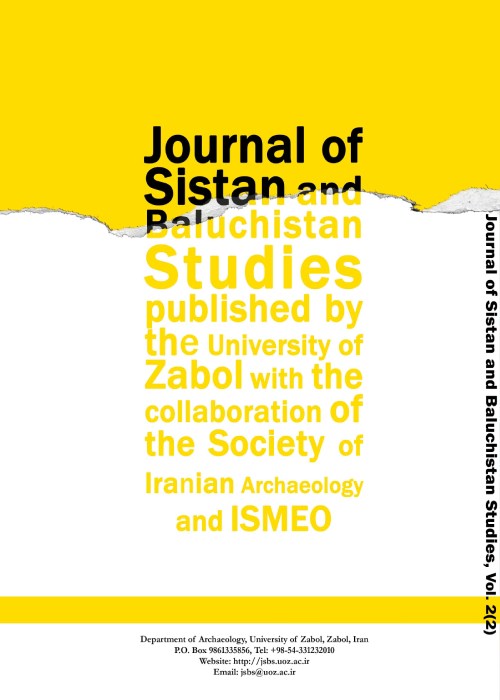A COMPARATIVE STUDY OF THE STRUCTURE AND CHEMICAL COMPOSITION OF BUFF WARE IN SHAHR-I SOKHTA WITH THE SURROUNDING SATELLITE SITES (CASE STUDY OF TEPE SADEGH), IRAN
Author(s):
Article Type:
Research/Original Article (بدون رتبه معتبر)
Abstract:
At the same time, with the expansion and flourishing of the ancient site of Shahr-i Sokhta in southeastern Iran in the third millennium BC, many satellite sites formed around it. Population growth, productivity boom, specialization, and the development of this ancient city led its residents to seek habitation in new and separate regions in connection with the main center of the colony; that is, Shahr-i Sokhta, to create these satellite villages around it. Thus, in the second and third periods of Shahr-i Sokhta, various satellite sites around this ancient city appeared. The most important is in the mounds of the Rud-i Biyaban in the second period of settlement in Shahr-i Sokhta. Tepe Sadegh in the southern area of Qale Rostam is one of the most significant satellite sites of the third millennium BC. Its excavations began in 2009 by the Archaeological Committee of Sistan and Baluchestan University. The result of the excavations is the discovery of remarkable and valuable cultural findings, including architectural structures, pottery, stone artifacts, metal artifacts, and statuettes. Valuable discoveries from the excavations of this ancient site indicate the depth of extensive cultural relations of this site with Shahr-i Sokhta and other neighboring historical regions. This research is done based on the data obtained from laboratory studies of buff ware obtained from the Tepe Sadegh by various instrumental methods, including X-ray diffraction (XRD) and X-ray fluorescence (XRF). A comparative study of this experimental study results with the results of the analysis of buff ware samples obtained from Shahr-i Sokhta has indicated that the pottery discovered from both areas has a very similar structure and chemical composition. It suggests that the potters of Shahr-i Sokhta and the surrounding satellite sites, such as the Tepe Sadegh, may have used the same clay deposits to produce their pottery. In addition, laboratory experiments indicate that with the establishment of specialized centers for the production of pottery products in the form of satellite sites around Shahr-i Sokhta, the quality of ceramic products in terms of construction, compared to Shahr-i Sokhta, has improved somewhat.
Keywords:
Language:
English
Published:
Journal of Sistan and Baluchistan Studies, Volume:2 Issue: 1, Jun 2022
Pages:
19 to 27
magiran.com/p2554793
دانلود و مطالعه متن این مقاله با یکی از روشهای زیر امکان پذیر است:
اشتراک شخصی
با عضویت و پرداخت آنلاین حق اشتراک یکساله به مبلغ 1,390,000ريال میتوانید 70 عنوان مطلب دانلود کنید!
اشتراک سازمانی
به کتابخانه دانشگاه یا محل کار خود پیشنهاد کنید تا اشتراک سازمانی این پایگاه را برای دسترسی نامحدود همه کاربران به متن مطالب تهیه نمایند!
توجه!
- حق عضویت دریافتی صرف حمایت از نشریات عضو و نگهداری، تکمیل و توسعه مگیران میشود.
- پرداخت حق اشتراک و دانلود مقالات اجازه بازنشر آن در سایر رسانههای چاپی و دیجیتال را به کاربر نمیدهد.
In order to view content subscription is required
Personal subscription
Subscribe magiran.com for 70 € euros via PayPal and download 70 articles during a year.
Organization subscription
Please contact us to subscribe your university or library for unlimited access!


